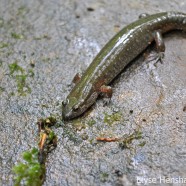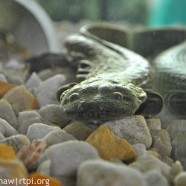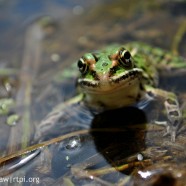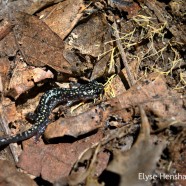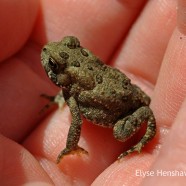Northern Dusky Salamander (Desmognathus fuscus)
In the Chautauqua-Allegheny Region we have two species of dusky salamanders that have a lot in common. Do you have any idea which dusky this is? I’ll give you a hint: take a good look at the tail of this individual. Give up? This is a Northern Dusky Salamander (Desmognathus fuscus), often mistaken for its relative the Allegheny Mountain Dusky Salamander (Desmognathus ochrophaeus). Northern duskies have a distinctive keel on their tail whereas mountain duskies have round tails from base to tip, making it a little easier to tell the two very similar species apart. As you are getting out...
Read MoreNEPARC Annual Meeting
Last week I got the opportunity to attend my first NEPARC (Northeast Partners in Amphibian and Reptile Conservation) annual meeting held at Allegany State Park in Salamanca, New York. For those that aren’t familiar with the not for profit, NEPARC is a regional subset of PARC or Partners in Amphibian and Reptile Conservation. This organization forms inclusive partnerships with like-minded professionals and citizens that are dedicated to the conservation of amphibians, reptiles and their respective habitats throughout each region of the United States and beyond. PARC interacts with...
Read MoreNorthern Leopard Frog (Rana pipiens)
Earlier this week while I was getting pictures of grasses, sedges and rushes for my upcoming program at Jamestown Audubon Society, I came across this little frog that was trying to be as still as possible, utilizing a simple but strategic antipredator behavior. Rana pipiens, commonly known as the Northern Leopard Frog, is one of many species that frequents New York’s grassland areas near ponds and marshes and can easily hide itself in the tall grasses during the summer months. To learn more about the species that benefit from our local grasslands, don’t miss the program coming up...
Read MoreNorthern Slimy Salamander (Plethodon glutinosus)
On our recent trip to Rim Rock Overlook on the Allegheny National Forest, we surveyed around the rocks and under the rocks (the small ones of course) to see what life we might come across. While walking through the rocky forest, our rock flipping efforts revealed a young Northern Slimy Salamander (Plethodon glutinosus), a salamander that truly lives up to its name and can get you into a rather sticky situation! When handled or harassed, Slimy Salamanders will secrete a glue-like mucus from their skin that is difficult for humans to remove and often deters predators from attempting to eat...
Read MoreLate Summer Toadlets
This past week we visited another Natural History Atlas site, Canadaway Creek Wildlife Management Area, to survey for a diversity of species and update our past information about the site. While we were out exploring and recording the species we came across, we noticed a number of tiny American toads (Anaxyrus americanus), or toadlets, hopping across the trail. Only about half an inch long, these little toads were recently metamorphosed from nearby ponds and pools. These amphibians waste no time at all, as it only takes them about 1-2 months to go from a gelatinous egg to a free swimming...
Read More



